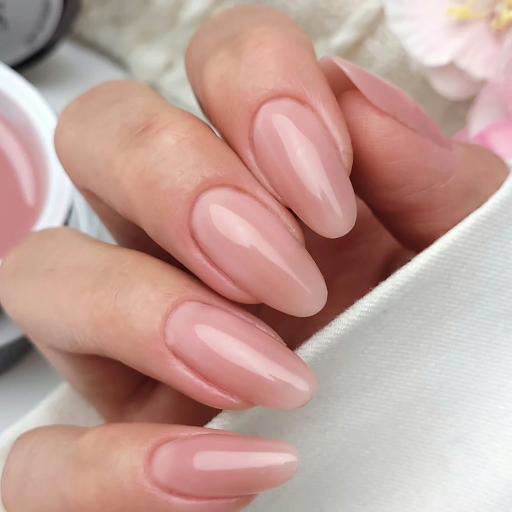The skin’s lipid barrier is composed of ceramides which are, in essence, intricate structures that fulfill many functions, one of which is to protect the skin. The specifics of ceramides’ benefits to the skin as part of a skincare regimen, such as the ability to prevent the skin from getting damaged by environmental factors, to moisturize, and to promote skin health, will be discussed in this blog. The process of aging changes the structure of the skin, and we will look at how ceramides can be effective against various factors in the environment, such as pollution, sun exposure, and extreme temperatures. With this understanding, readers will be able to see firsthand how integrating products with high ceramide concentrations into their skincare will help maintain the skin’s health and beauty. We are confident this deep dive into the subject will provide a better understanding of the contemporary approaches in dermatological practice in the context of ceramides’ function.
What are Ceramides and How Do They Benefit the Skin Barrier?

Ceramides are lipid molecules that are naturally contained in the stratum corneum (the outermost layer of the skin). They are essential elements of the skin barrier constituting as much as 50% of its structure. The role of ceramides is to adhere skin cells together forming a watertight seal that aids in moisture retention, prevents excessive evaporation or loss of water, and acts against irritants, pollutants, and pathogenic agents that cause infection to the skin. Lack of ceramides, otherwise, results in dryness, irritation, and dysfunctional barrier components that increase vulnerability to damage caused by the external environment. Replenishing skin barrier components like ceramides through OTC formulations such as moisturizers and serums helps restore skin barrier integrity which enhances hydration and skin strength over some time.
Understanding the Role of Ceramides in Skin Health
Ceramides are structurally crucial lipids present in the outer layer of skin, accounting for almost 50%. In humans, the primary function of ceramides is to prevent transepidermal water loss (TEWL) while also protecting the skin from irritants, allergens, and other pollutants. Since the skin barrier is weak in such instances, research states that a reduction in ceramides is closely linked with eczema, psoriasis, and chronic dryness.
Ceramide-containing moisturizers and serums can be very effective in restoring the lipid content in the skin since they are topically applied. These ceramides are usually a mix of types 1, 3, and 6-II which enables them to work synergistically, thereby, mimicking the natural lipids of the skin. Skincare products with ceramides are also advanced with niacinamide or hyaluronic acid to help further wrap the skin and bring more moisture. Clinical studies show that when applied regularly, such products help improve the state of the skin as well as its hydration content in addition to restoring the normal functioning of skin over time. To enhance the impact of ceramide products, dermatologists advise using them on moist skin to retain maximum moisture.
How Ceramides Strengthen the Skin Barrier
Ceramides, a type of lipid, are vital components that constitute more than half of the structure of the skin barrier. This lipid layer maintains the moisture content within the skin while also protecting it from environmental pollutants, irritants, or microorganisms present in the surroundings. Such loss of ceramide—due to old age, use of harsh skin care products, or daily environmental exposure—compromises the barrier and enhances dryness, irritation, and sensitivity. Application of ceramides through topical skin care formulations aids in restoring the function of the skin barrier and its capacity to retain moisture. Many clinical trials have been conducted during which creams containing ceramides were regularly applied to the skin to test their effectiveness so that the patient’s skin remains strong throughout and does not get dry.
The Benefit of Ceramides for Different Skin Types
All skin types have ceramides which are necessary to sustain the barrier function of the skin. Ceramides form a lipid bilayer around the cells and for dry skin ceramides replenish lost lipids improving hydration and reducing flakiness. For people with oily skin or those prone to acne using synthetic ceramide formulations is good as they sand the barrier without blocking pores and they also help with the lipid imbalance that is endemic with strong acne medications. In the case of sensitive skin, ceramides help to keep irritations to a minimum by bolstering the skin barrier and protecting against irritants in the environment. The person who is aged will also find it important as the natural levels of ceramides decrease leading to more moisture loss and more susceptibility. Using such products in skincare regimes enhances the structure and overall health features of the skin therefore they find a general application in various skin cases.
How to Use Ceramides in Your Skin Care Routine?

Start your skincare journey by seeking out products that contain ceramides and are suited to your type of skin, such as serums, moisturizers, and cleansers. After cleansing and toning the skin, applying ceramide-enriched products that offer additional rescue will work wonders. It is advisable to apply them both during the day and at night. In the morning, wear them under sunscreen, and in the evening, combine them with other nourishing products that would aid the skin barrier. Skin will perform better when ceramide is combined with hyaluronic acid or niacinamide since it will add more moisture and will strengthen the skin. Untreated areas always possess a risk hence the more regular application, the better the outcome will be over time. Throughout the day and night encompasses far more than just a couple of hours.
Incorporating Ceramide Products into Your Daily Regimen
To include ceramide products in your skincare therapy in the right way, you must first determine the type of skin that you have and what your skin requires. Ceramide-containing moisturizers should be used right after washing the face so that the moisture retention pressure is balanced. Ceramides should be used together with broad-spectrum sunscreen in the mornings for ease and hydration throughout the day and to prevent the skin from drying out. Retinol or peptides can also be combined with ceramides overnight for skin repair and renewal during sleep. Serums containing a good ratio of ceramides, cholesterol, and fatty acids are preferable since they provide the skin barrier components. To notice certain alterations in hydration, elasticity, and in general considerable healthiness of the skin, it is compulsory to apply skin therapy constantly daily for several weeks.
Tips for Choosing Skincare Products that Contain Ceramides
My main goal is to pick formulations that contain special ingredients that act synergistically with ceramides, like hyaluronic acid or niacinamide which has been shown to promote hydration of the skin and healing of the barrier. Check the ingredient list for bio-identical ceramides or Great, so now we have ceramides NP, ceramides AP, or ceramides EOP. Find a product that contains a lipid ratio that is similar to the body’s lipid composition: a ratio of 3:1:1 for ceramides, cholesterol, and fatty acids. To protect the ingredients, opt for products that have opaque and airtight external packs, then target certain products suitable for specific skin types: those with oily skin who need non-comedogenic solutions, and people who have dry skin can choose to use heavier creams. If possible, opt for those without preservatives or free of fragrance, as it can help reduce irritation for more sensitive skin.
Are Ceramides Safe for Sensitive or Acne-Prone Skin?
Ceramides are often perceived to be beneficial, even for sensitive and acne-prone skin types. In these conditions, they have great importance in maintaining the skin barrier. For sensitive skin, ceramides help in the symptoms of redness, irritation, and also water loss and this suggests a healthy, stronger skin barrier. For acne-prone skin, moisturizers containing ceramides can be a solution as they hydrate the skin without suffocating the pores especially when non-comedogenic preparations are applied. Some researchers support the practice of preventive barrier care, arguing that it minimizes the negative effects of retinoids or benzoyl peroxide – common active ingredients in acne treatments. Make sure to take a patch test for any new application and choose the creams that are made for your particular area of concern.
What Types of Ceramides Are Used in Skin Care Products?

Most of the ceramides used in skin care products are either synthetic or bio-identical, which indeed are the derivatives of human skin. The most common ones include Ceramide 1 (EOS), Ceramide 2 (NS), Ceramide 3 (NP) and Ceramide 6-II (AP) among others. Each type has a definite function for skin barrier reinforcement and moisture retention. For instance, Ceramide 1 is effective in improving the integrity of the skin barrier, whereas ceramide 3 acts as a water loss retardant. Ceramides are used in skin care products in large numbers and in that order because of their healing and moisturizing properties to give the skin a strong barrier.
The Three Essential Ceramides: Ceramides 1, 2, and 3
Ceramide EOS, Ceramide NS, and Ceramide NP all play an important role together and complement one another in maintaining and improving skin function. For example, Ceramide 1’s role is rather structural, since its primary function is to assist in the formation of a lipid layer which is essential to the construction of the skin barrier functional against stresses in the environment. Moreover, ceramide 2 is a water retention selection element that helps the skin hold enough moisture while preventing any excessive water loss through the skin (TEWL). Finally, Ceramide 3 facilitates water retention and enhances barrier repair so it is very effective in the restoration of barrier-compromised and dry skin. Due to their capabilities, these ceramides are typically included in cosmetic and dermatological formulations of various purposes: thanks to the synergistic effect, the optimal state of ut has been achieved.
Natural vs. Synthetic Ceramides: Which is Better?
Both natural and synthetic ceramides have merits depending on their envisaged use. Natural ceramides that are obtained from plants and animals are the exact subclasses expected from human skin structures, hence determining their usefulness in skin barrier remediation. However, they may be costly to manufacture and are likely to have more chance of impurities or allergens.
In contrast, synthetic ceramides are made in a lab to have the same structure as natural ceramides which increases the consistency and stability of the formulations. They are less expensive and therefore, more popular in skincare products due to their consistent performance and decrease in chances of contamination. For many users, synthetic ceramides have a similar effect as natural ones because both can restore the lipid matrix and maintain moisture within the skin. In most cases, they consider formulation objectives, consumer needs, and finances, as there is no one solution preferable over the other in all cases.
Ceramides in Skin Care: Understanding Their Function
Ceramides constitute lipids that are found both naturally and within the skin and have been noted for forming approximately fifty percent of the outer layer of the skin. The role of ceramides includes the sealing of water within skin cells, thus preventing transepidermal water loss (TEWL), and providing protection from environmental threats including pollution and microbes all of which form part of the external skin barrier structure. Without ceramides, the skin barrier becomes extremely dry, gets irritated, and more often than not dry conditions are presented which is clinically termed eczema or dermatitis.
In the modern cosmetics industry, both organic and artificial ceramides are used in aiding the low lipid matrix in the skin. To assist with the stability and uniformity of products, synthetic ceramides are developed in laboratories. On the other hand, natural ceramides that are obtained from various plant or animal sources closely recreate the physiological structure of the skin. Alterations may be seen yet both classifications are beneficial for skin barrier hydration, repair, and strengthening. Therefore, for people suffering from dryness or skin sensitivity, the addition of products with high ceramide levels products will restore skin integrity.
Can Ceramides Help with Specific Skin Conditions?

Yes, ceramides can be highly beneficial for specific skin conditions. For example, in eczema and psoriasis, help restore the compromised skin barrier by replenishing essential lipids, alleviating dryness, and reducing irritation. Similarly, for acne-prone skin, ceramides support hydration without clogging pores, promoting healthier skin recovery. Additionally, ceramides are effective in addressing age-related skin dryness by combating moisture loss and enhancing skin elasticity. Their barrier-repairing properties make them versatile for a wide range of dermatological concerns.
The Role of Ceramides in Managing Dry Skin and Eczema
The management and improvement of dry skin and eczema are chiefly impacted by ceramides since they help protect and repair the skin barrier. They are lipid molecules that constitute a major component of stratum corneum and help in moisture retention and lessen TEWL. Eczema and dry skin patients are mostly with surface ceramide deficiency that affects the barrier function and makes the skin more vulnerable to irritating and allergic substances. Their topical application or cosmetics, which include synthetic and natural ceramides, have accomplished the restoration of these lipids, thickened the skin barrier, boosted hydration, and decreased skin irritation. In addition, ceramides also promote hormesis and improve the cosmetic recovery of the skin which makes them a crucial ingredient in the treatment of such disorders.
Do Ceramides Improve Aging or Compromised Skin?
Yes, ceramides truly work well in the treatment of aging or compromised skin. With age, the natural level of ceramides reduces resulting in increased skin dryness, loss of elasticity, and weakened skin barrier. When the skin barrier is supplemented with a nourishing ceramide lotion through the use of proper skin care products, moisture balance is regained, relative skin firmness is enhanced, and fine lines and wrinkles are reduced as well. Moreover, ceramides are essential in the restoration of the skin barrier which is usually damaged by the environment or skin conditions like eczema and rosacea. Regular application of ceramide-containing formulations increases the level of skin hydration, and calms irritations while enhancing the skin’s barrier function, thus they help to fight aging and assist skin recovery.
How Do Ceramides Interact with Other Skincare Ingredients?

Ceramides interact synergistically with several other skincare ingredients to enhance skin health and resilience. When combined with humectants like hyaluronic acid or glycerin, ceramides help trap moisture within the skin, maximizing hydration. Similarly, pairing ceramides with niacinamide can boost the skin barrier’s repair and resilience, as niacinamide enhances ceramide production within the skin. They also work effectively alongside emollients such as fatty acids, cholesterol, and squalane to reinforce the lipid matrix and maintain skin smoothness. However, to optimize these interactions, formulations should maintain balanced ingredient concentrations that mimic the skin’s natural composition for the most effective results.
Combining Ceramides with Moisturizers for Optimal Skin Hydration
According to science, including ceramides in a moisturizer has several advantages in terms of optimal skin hydration, as well as skin barrier restoration. The skin barrier is made of lipids which ceramides are, thus preventing transepidermal water loss while maintaining hydration. When elaborating or choosing moisturizers the application of ceramides in conjunction with other hydrating components is necessary to enhance their effects. For example, hyaluronic acid which is a humectant helps pull moisture to the surface of the skin while ceramides lock in that moisture. Furthermore, ceramides may be complemented with fatty acids and cholesterol in moisturizers by replacing lipid content in the skin barrier and hence structure.
The ideal pH and ingredients of a ceramide-rich moisturizer should be proportional to the pH and ingredients of the skin lipids. In this way, the formulation helps the skin barrier repair process effortless. Clinical research shows that moisturizers with a high concentration of ceramide, particularly as part of multi-layered skin care, make a significant difference in skin hydration, and elasticity and increase protection against external irritants over time, hence they are an essential element of skin care routines.
Potential Interactions Between Ceramides and Other Active Ingredients
Ceramides are regarded as non-irritating and can be easily combined with various actives to improve skin and barrier function. When given peripheral joint injections, retinoids can increase ceramides in the skin’s lipid structure, thus decreasing skin dryness and irritation. Also noted is the reduction of inflammation when ceramides are used with niacinamide since the skin’s barrier function gets better. Care however should be taken in formulating products where exfoliating acids such as AHAs and BHAs are used in structural formulation. Such formulation increases the acid content and low pH of the product which may destabilize the ceramide. To prevent this ceramide ceramide-containing products, both active and inactive with other agglomerates should be formulated to possess a high pH in which care active-free other agglomerates can work. Ceramide-rich products are often recommended by skin-related issues professionals such as dermatologists or skin care professionals as part of the multistage process in which acids or retinoids are applied from the start, followed by the ceramide-rich moisturizer to help retain water in the skin.
References
Frequently Asked Questions (FAQ)
Q: What are ceramides for skin, and how do they function?
A: Ceramides are lipids that are naturally found in the outer layer of your skin. They play a crucial role in maintaining the skin barrier function by helping to keep the skin hydrated and protecting it from environmental damage and pollutants.
Q: How do ceramides work to improve skin health?
A: Ceramides work by reinforcing the skin’s natural barrier, helping to prevent moisture loss and protect the skin from external irritants. This support of the barrier function can lead to healthier, more resilient skin.
Q: Why are ceramides essential in skincare products?
A: Skincare products contain ceramides because they help keep the skin barrier intact and hydrated, which is essential for maintaining a healthy skin barrier. This is particularly beneficial for those with compromised skin barriers, such as people with sensitive or aging skin.
Q: Can using ceramides in skincare help with acne?
A: Yes, ceramides can be beneficial for acne-prone skin by maintaining a healthy skin barrier, which can reduce inflammation and irritation. However, it is essential to use products specifically formulated for acne to avoid clogged pores.
Q: Are there specific skincare routines that benefit from ceramide skin care products?
A: A skincare routine that includes ceramide-rich products is beneficial for anyone looking to support the skin barrier function. Products with ceramides are particularly effective for those experiencing dry, sensitive, or aging skin.
Q: How do ceramides help with aging skin?
A: Aging skin often experiences a decline in natural ceramides, leading to a compromised skin barrier. Ceramides help keep the skin hydrated and improve skin tone and texture, thus supporting a healthy skin barrier and reducing signs of aging.
Q: What types of products contain ceramides, and how should they be used?
A: Products containing ceramides include creams, lotions, and serums. These can be incorporated into your skincare routine by applying them after cleansing and before sunscreen to help protect the skin and maintain its natural moisture.
Q: Can ceramides help with itchy skin or inflammatory skin conditions?
A: Yes, ceramides can help soothe itchy skin and support the skin barrier, making them helpful in managing inflammatory skin conditions like eczema by reducing dryness and irritation.
Q: Are there any side effects of using ceramides in skincare?
A: Ceramides are naturally occurring substances in the skin, and products with ceramides are generally well-tolerated by all skin types. However, it’s always wise to patch-test new products to ensure they do not irritate your skin.
Q: How do I choose the right ceramide skincare products for my skin type?
A: When selecting ceramide skin care products, consider your skin type and specific concerns. For dry skin, opt for richer creams, while those with oily or acne-prone skin might prefer lighter lotions or serums. Always look for products that list ceramides prominently in the ingredients.









